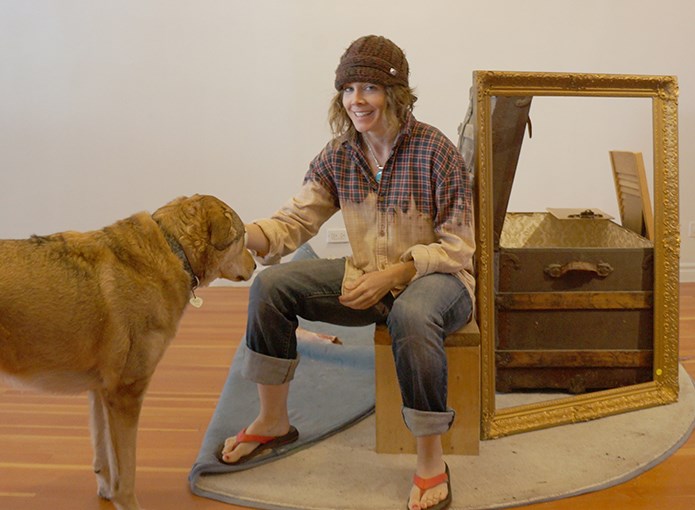Alternative medicine should not be only for the wealthy. That is the philosophy behind a new group acupuncture clinic in Squamish.
A new clinic, Pins + Peeples Community Acupuncture, opened in downtown Squamish this week and it is the first of its kind in the Sea to Sky Corridor.
The aim is to provide acupuncture in a group setting – in reclining overstuffed chairs, in fact, said acupuncturist Katie Lavelle, as she took a break from adding a calming dark grey paint to the interior walls of the clinic late last week.
“When is the last massage that you had? We should be getting those things and eating super well and doing all those things on a regular basis, but financially, not everybody can take advantage of that, unless you’ve got really good benefits,” she said.
Offering treatments in a group setting builds community and opens up the world of alternative medicine to people of all economic statuses, she said.
Community acupuncture started in Portland, Oregon in 2002 and was labeled as working-class acupuncture, according to Lavelle. Portland acupuncturists determined that private, once-a-week acupuncture treatments would account for about 20 per cent of a lower-income person’s budget but only about three per cent of a wealthy person’s income, according to Lavelle.
“So, basically it is nothing for someone to go and get the boutique-style acupuncture, but for people who are low income, they are not able to enjoy alternative health,” she said.
It is part of a bigger societal problem, Lavelle said: The middle class is disappearing.
“It happens in the housing here and it is happening in a lot of different areas that are pretty evident.”
Even people who on paper may look like they could pay for private treatment may not have the disposable income, she said.
“The same thing goes for everyone, it is an equal opportunity to just pay what you can afford,” she said.
How it will work in the Squamish clinic is people book an appointment online then come in and after filling out an intake form, patients put their payment into an envelope, slip it into a box and take a seat in one of the several recliners, she said.
Treatments will be offered on a sliding scale of affordability, she said.
Patients aren’t rushed with this model, according to Lavelle. They can stay and even take what Lavelle calls an “acu-nap,” during their treatment.
There will be white noise machines and calming music playing so the treatment between Lavelle and the patient will still be confidential, she said.
In 2003 the World Health Organization, in its report Acupuncture: Review and Analysis of Reports on Controlled Clinical Trials, confirmed acupuncture to be effective in treating 31 conditions including pain, headache, stroke symptoms and depression.
“You can treat anything from allergies and asthma, skin disorders, infertility, insomnia, all kinds of pain… really anything that goes wrong with you, you can treat with Chinese medicine,” Lavelle said, adding that there is of course a role for western medicine as well.
Acupuncturists can still make a living with this model, as long as they get the numbers. Regardless, it is a model of care with which she is most comfortable.
“There is just a really nice healing vibe that happens when people are coming and getting treated together,” she said. “It gives people who are a little bit nervous an opportunity to come in with friends and family and go through it at the same time… and it builds community that way. It just makes you realize that everybody has got something going on.”



